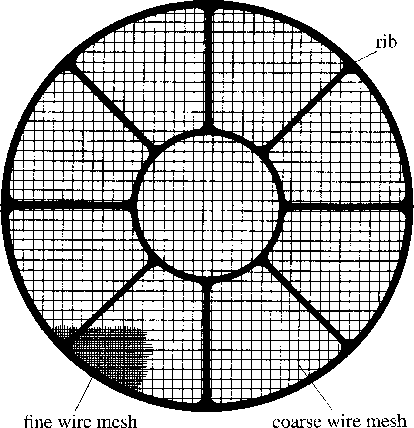
Figure 3.6: A schematic diagram of the ROSAT PSPC window support structure showing the ribs, ring and wire meshes.
| About ROSAT |
ROSAT Home Page | ROSAT Images |
|---|

Figure 3.6: A schematic diagram of the ROSAT PSPC window support
structure showing the ribs, ring and wire meshes.
The thin plastic entrance window of the PSPC requires additional
support to withstand pressure of the counter gas against vacuum.
A schematic view of the support structure is shown in
Fig. 3.6.
It consists of a rigid circle (28 mm diameter) with eight equally
spaced radial struts.
On a smaller scale than this ``wagon wheel'' structure are
two mesh systems:
the coarse mesh of ![]() tungsten wires with 2 mm (171.8'')
spacing, and a fine mesh with
tungsten wires with 2 mm (171.8'')
spacing, and a fine mesh with ![]() tungsten with 0.4 mm
(34.4'') spacing.
tungsten with 0.4 mm
(34.4'') spacing.
The ribs and both meshes are completely opaque to X-rays in the ROSAT
energy band.
Excluding those areas within the shadow of the ribs,
the average energy independent transmission of the
window support structure (i.e., the mesh) is 79%.
It should be noted that this average transmission is obtained
only over a sufficiently large area ( ![]() )
to average over the mesh spacing; over smaller areas,
the transmission due to the window support structure
may be different depending on how much of the area of the X-ray
beam is actually occulted by the mesh grid wires.
)
to average over the mesh spacing; over smaller areas,
the transmission due to the window support structure
may be different depending on how much of the area of the X-ray
beam is actually occulted by the mesh grid wires.
In the vicinity of the centre of the fov, the point response for a point source is so sharp (and hence the illuminated area on the PSPC entrance window so small) that significant shadowing behind the coarse mesh can occur. Therefore, a slow spacecraft ``wobble'' is performed in pointed observations in a direction diagonal to the mesh structure (see Sect. 1.3.3). In this fashion, the coarse mesh grid will be smoothed out when projected into sky coordinates and the permanent occultation of X-ray sources behind the coarse wire mesh is not possible. As the average transmission loss caused by the wires is known, this wobble prevents significant uncertainties in source flux. However, the periodic obscuration of sources by the wires will create artificial temporal variations in source light curves of order tens of seconds to minutes.